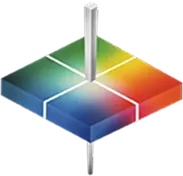
Polyethylene terephthalate (PET) preforms are essential to attractive, durable packaging for industries like beverage manufacturing, edible oils, and more. As the market continues to grow, so does the need to accurately and objectively quantify appearance to uphold product quality. Spectrophotometry is the best solution for scientific color measurement, eliminating the error-prone nature of manual visual assessment for higher confidence and precise data. Explore why color matters in preforms, the challenges of color consistency, and the ideal equipment for measurement to ensure high-quality results.
Why Color Matters for Plastic Preforms
Color plays an instrumental part in conforming to standards, protecting products, and influencing consumers.
Industry Standards
Plastic preform color is vital in meeting industry-specific standards. Sectors like pharmaceuticals and beverages often have strict color tolerances to ensure safety, traceability, and regulatory compliance. For example, specific packaging colors may indicate the presence of certain additives or differentiate between product formulations. Adhering to these color standards helps uphold product integrity and consumer safety.
Product Protection
Some goods, such as certain pharmaceuticals and beverages, are sensitive to ultraviolet (UV) light. Ongoing exposure to UV rays can cause degradation, affecting visual appeal, medical efficacy, safety, or taste. Opaque plastic packaging forms a shield against UV light, helping protect the product within against excess exposure. Inconsistent color may signal uneven distribution of colorants or UV-blocking additives, potentially increasing the chances of UV rays penetrating the packaging.
Quality Perception
Products like edible oils and beverages compete in crowded marketplaces. As a result, standing out on the shelves is key to your success. The plastic colors you choose help attract attention and reinforce your branding with consumers. When your color remains consistent and appealing, it indicates your commitment to quality and meeting your customers' expectations. Conversely, color alterations can signify issues with your quality control or manufacturing processes, causing consumers to reach for a competitor's product instead.



